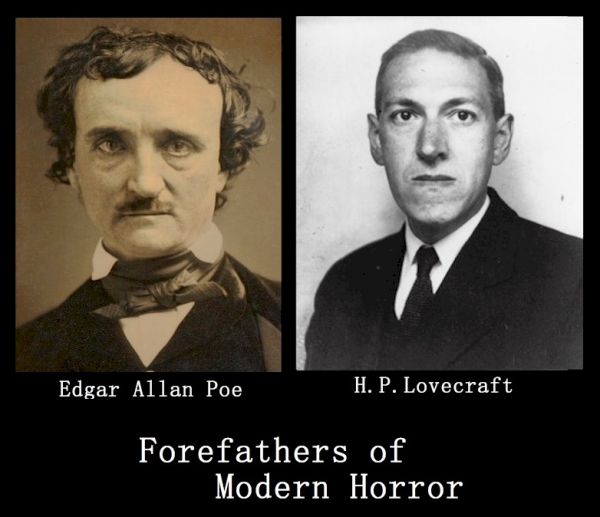by Amanda Marcotte
Wingnuts are consuming a wingnut media full of lies and misinformation,
whereas liberals are more interested in media that puts facts before
ideology.
Pew Research set out to find what’s behind what
it considers the increasing political polarization
of the United States; why the country is moving away from political
moderation and becoming more and more divided between liberals and wingnuts. Its first report on the phenomenon,
which examines where people are hearing news and opinion in both regular and social media, shows that this is happening for very different reasons among people moving to the right than for people moving to the left.
Or
that’s the charitable way to put it. The less charitable way is to say
Pew discovered that wingnuts are consuming a wingnut media full
of lies and misinformation, whereas liberals are more interested in
media that puts facts before ideology. It’s very much not a “both sides
do it” situation. Wingnuts are becoming more wingnut because
of propaganda, whereas liberals are becoming more liberal while staying
very much checked into reality.
That this polarization is going on isn’t a myth.
Previous Pew research
shows the percentage of Americans who are “mostly” or “consistently” wingnut has grown from 18% in 2004 to 27% in 2014. During that same
period, the percentage of Americans who are “mostly” or “consistently”
liberal stayed a little more consistent, growing from 33% to 34% in 10
years. (These statistics don’t measure what you call yourself, but what
you rate as on a scale of beliefs about various issues.) While liberals
became more liberal, wingnuts both became more numerous and more
rigidly wingnut over time. What gives?
Enter wingnut
media, which has a nifty trick of convincing audiences it’s the other
guys who are the liars, all while actually being much less trustworthy
in reality. From wingnut screaming
about the “media elite” to Faux News’s old slogan “(not)Fair and (un)Balanced,” wingnut media is rife with the message that everyone is out to get
you, wingnut viewer, and only in the warm blanket of wingnut
propaganda will you be safe.
The message, the Pew research
suggests, has really taken hold. Pew researchers gave respondents a list
of 36 popular media sources and asked how much they trusted each one.
Some were liberal, like
The Daily Show or ThinkProgress. Some
were wingnut, like Lush Dimbulb or Faux News. Most of them are
fairly straightforward news organizations with no overt political
agenda, like NPR, various network news, CNN, and the
New York Times.
The
findings were astounding. Out of the 36 news sources, consistent
liberals trusted 28, a mix of liberal and mainstream news sources.
Mostly, liberal respondents generally agreed, holding out a little more
skepticism for overtly ideological sources like Daily Kos or
ThinkProgress, but not actually
distrusting them, either. The
only news sources liberals didn’t trust, generally, are overtly wingnut ones, such as Faux News, the Blaze, Breitbart, or Lush Dimbulb’s show.
Wingnuts, on the other hand, saw betrayers
and liars around every corner. Consistent wingnuts distrusted a
whopping 24 out of 36 outlets and mostly wingnut respondents
distrusted 15 and were skeptical of quite a few more. The hostility
wasn’t just to well-known liberal sources like MSNBC. Weak-minded wingnuts hated all the network news, CNN, NPR, and the major
national outlets, except the
Wall Street Journal. Respondents
who are mostly wingnut fared better, but were still hostile to the
New York Times and the Washington Post, as well as skeptical of
mainstream organizations like CBS and NBC News.
The
fact that wingnuts are this paranoid should be alarming enough, but
it becomes even more frightening when you consider who wingnuts do
trust in the media. Consistent wingnuts only trusted 8 media
sources--compared to the 28 liberals trusted--and of the eight, only one
has anything approaching respectable reporting or reliable information.
And that one, the Wall Street Journal, has good straight
reporting but has an op-ed page that is a train wreck of right-wing
distortions and misinformation. Most wingnut people were a little
more open-minded, trusting USA Today and ABC News, but still were
supportive of openly distorting sources like Faux News or the Drudge
Report.
The trust wingnuts put in wingnut media is
utterly misplaced. For instance, both consistent and mostly wingnut
people love Glenn Beck, though he’s a
well-known purveyor of outrageous conspiracy theories
that percolate up to him from fringe characters. Breitbart and Sean
Hannity also rated high, despite their shared history of championing wingnut lunatic fringe characters like Cliven Bundy.
But what is really
frightening is the reach of Faux News. Faux News rated as the only real
news source for consistent wingnuts, with 47% of them citing it as
their main source of news. Nothing even came close to touching it, as
the second most common answer, “local radio” was cited by only 11% of
consistent wingnuts. Eighty-eight percent of consistent wingnuts trusted Faux News. Mostly wingnut and even “mixed”
people also liked Faux News.
The problem with this is watching Faux
News actually makes you less informed than if you don't watch any news
at all. In a 2012 study,
Faux News viewers rated the absolute lowest in ability
to correctly answer questions on a quiz about recent news events.
People who didn’t take in any news programs at all did better on the
quizzes. NPR listeners rated the best. Consistent liberals in the Pew
research were big fans of NPR, by the way. It was the second most common
outlet cited as a favorite by consistent liberals, topped only by CNN.
Faux
News is one of the main factors, possibly the main factor, driving
political polarization in this country. Huge chunks of this country
listen mostly or solely to a relentless stream of misinformation coming
from Faux News, coupled with warnings, implied or even baldly stated, to
avoid listening to other, more factually accurate news sources.
Unsurprisingly, then, more people are becoming wingnuts and people
who were already wingnute are becoming more hardline about it. If
you have any Faux viewers in your family, you probably already suspected
this, but now Pew has given us the cold, hard facts to confirm your
suspicions.











